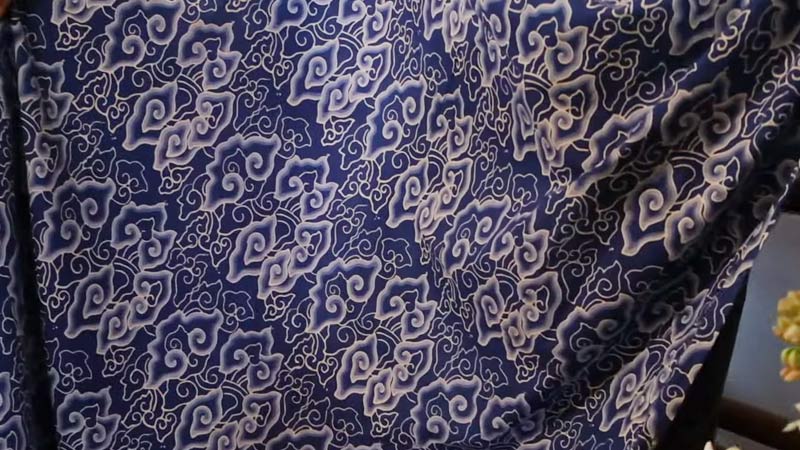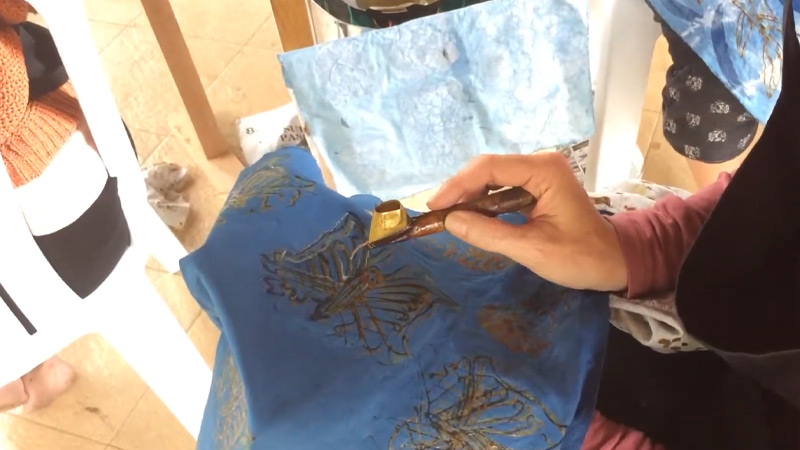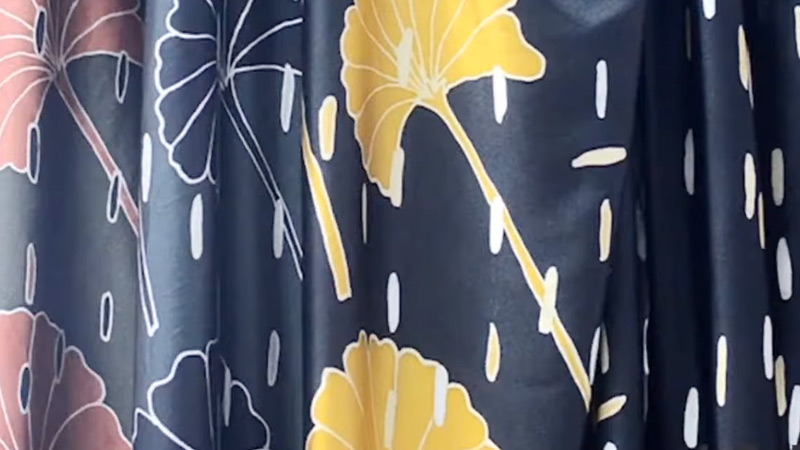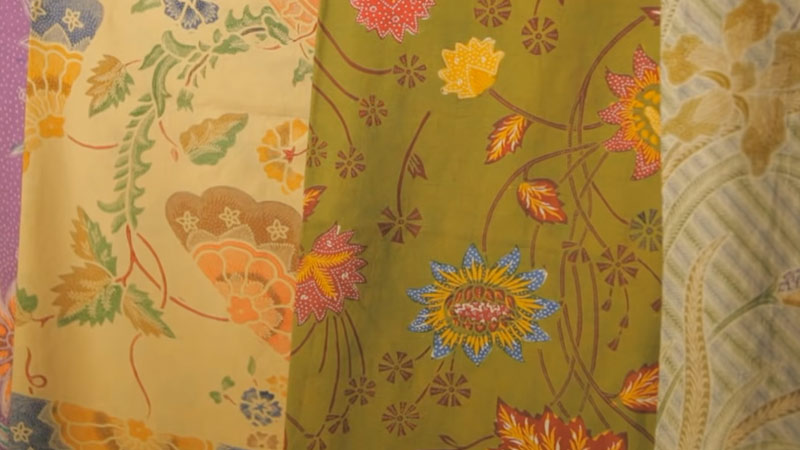Indonesia is renowned for its exquisite batik art, a traditional textile craft that showcases an impressive array of styles originating from different regions across the archipelago. Each type of batik carries its unique characteristics, motifs, and cultural significance, reflecting the diverse heritage of Indonesia’s various communities.
From the refined elegance of Javanese batik with its intricate patterns and royal symbolism to the vibrant and abstract designs of Balinese batik, the variations in styles are a testament to the creativity and craftsmanship of skilled artisans.
Other regions, such as Madura, Pekalongan, and Sumatra, contribute their distinct interpretations, weaving together a tapestry of colors and patterns that have captivated the world with their beauty and cultural depth.

Popular Types of Batik in Indonesia
Batik is a traditional Indonesian textile art that involves the application of wax and dye to create intricate and beautiful patterns on fabric. It has a rich cultural history and is recognized as an important part of Indonesia’s cultural heritage. Over the years, various regions in Indonesia have developed their unique styles of batik, each with its distinct characteristics and motifs.
Here are some of the notable types of batik found in Indonesia:
Javanese Batik

Javanese batik is perhaps the most well-known and widely practiced form of batik in Indonesia. It is predominantly produced in the central Java region, particularly in cities like Yogyakarta and Solo (Surakarta).
Javanese batik is characterized by its elegant and elaborate patterns, often featuring motifs inspired by nature, folklore, and royal symbols. The traditional color palette of Javanese batik includes shades of brown, indigo, and white.
Balinese Batik

Batik is also produced in Bali, although the Balinese style differs from the more intricate Javanese patterns. Balinese batik often features bold and vibrant colors, and the designs are more abstract and contemporary, influenced by the island’s artistic traditions.
Madurese Batik
Originating from the island of Madura, Madurese batik is known for its dark colors and bold geometric patterns. The motifs in Madurese batik often consist of rows of squares, stars, and rhombuses, creating a distinctive and eye-catching design.
Sundanese Batik
Sundanese batik hails from the West Java region and is characterized by its simplicity and elegance. The patterns are typically inspired by natural elements like flowers, leaves, and birds, rendered in soft and pastel colors.
Pekalongan Batik

Pekalongan, a city on the north coast of Java, is renowned for its vibrant and colorful batik creations. Pekalongan batik often incorporates Chinese and European influences into its designs, resulting in a unique fusion of styles.
Lasem Batik
Lasem is a town in Central Java famous for its unique batik style. Lasem batik features intricate motifs with a fusion of Chinese and Javanese cultural elements, reflecting the town’s historical connections with Chinese traders.
Cirebon Batik
Cirebon, located on the north coast of Java, is another region with its batik tradition. Cirebon batik typically includes floral patterns with bright colors, showcasing the area’s coastal heritage and cultural diversity.
Betawi Batik
Betawi is the traditional batik style of Jakarta, the capital city of Indonesia. Betawi batik often incorporates vibrant colors, geometric patterns, and motifs inspired by urban life and cultural influences from various ethnic groups residing in the city.
Batik Banten
Batik Banten is a traditional batik style originating from the Banten province of Indonesia, located on the western coast of Java. This style is distinguished by its intricate patterns and vibrant colors, incorporating various elements from the local culture and history.
Batik Banten often features motifs inspired by nature, mythological figures, and geometric designs. The artisans of Banten use a combination of traditional and innovative techniques to create stunning batik textiles that showcase the region’s artistic heritage and rich cultural influences.
Batik Aceh
Batik Aceh is a traditional textile art from the Aceh region of Indonesia, situated on the northern tip of Sumatra. Known for its distinct style, Batik Aceh often features bold and large geometric patterns with strong Islamic influences.
The designs are characterized by their simplicity and use of earthy colors, reflecting the region’s cultural and historical ties with the Arab world. Batik Aceh holds a significant place in the local heritage, representing the artistic expression and cultural identity of the people in this unique region.
Batik Kediri
Batik Kediri is a traditional batik style from the Kediri regency in East Java, Indonesia. It is known for its intricate and delicate patterns, often featuring floral motifs, birds, and geometric designs. Batik Kediri is characterized by its use of soft and pastel colors, creating an elegant and graceful appearance. The batik-making process in Kediri is deeply rooted in the region’s cultural heritage and is preserved through generations, making Batik Kediri an essential part of East Java’s artistic legacy.
FAQs
Batik design is a traditional Indonesian textile art that involves applying wax and dye to create intricate patterns and designs on fabric. It is a unique and labor-intensive process, resulting in beautiful and culturally significant textiles.
Batik design ideas often draw inspiration from various sources, including nature, mythology, folklore, religious symbols, and cultural traditions. Different regions in Indonesia have their specific motifs and patterns that reflect their local heritage and artistic influences.
Yes, you can create your own batik design! Many artists and enthusiasts enjoy experimenting with different patterns, colors, and motifs to craft their unique batik textiles. Whether it’s a traditional motif or a contemporary design, batik offers ample creative freedom.
Popular batik design ideas include floral patterns, birds, animals, geometric shapes, and abstract motifs. Traditional symbols like the “Parang” (saber) pattern, “Kawung” (palm fruit) pattern, and “Ceplok” (geometric) designs are also widely used in various batik styles.
Batik design ideas can be seamlessly incorporated into modern fashion and home decor. Fashion designers often use batik fabrics to create contemporary clothing and accessories with a touch of cultural flair. In home decor, batik textiles can be used as decorative wall hangings, tablecloths, pillow covers, or even framed as art pieces, adding a unique and exotic touch to any space.
Conclusion
The diverse types of batik in Indonesia stand as a testament to the country’s rich cultural heritage and artistic traditions. Each region has developed its unique style, reflecting the local customs, folklore, and natural surroundings.
From the intricate and elegant patterns of Javanese batik to the abstract and contemporary designs of Balinese batik, the variations showcase the creativity and skill of the artisans. The motifs and color palettes used in batik designs carry deep symbolic meanings, making each piece a work of art with a story to tell.
Through centuries of craftsmanship and innovation, batik remains a cherished national treasure, appreciated not only within Indonesia but also globally as a symbol of the country’s cultural identity and artistic prowess.
Leave a Reply